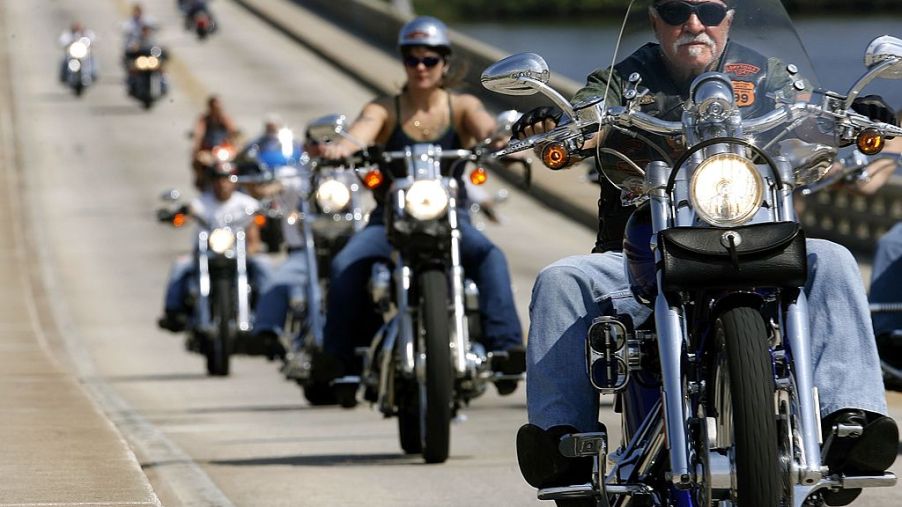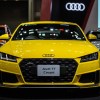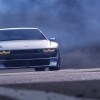
This Deal Almost Killed Harley-Davidson
The Harley-Davidson company has been around for over a century and is one of the names you hear most often when talking about motorcycles. A lot of memorable bikes have been produced by Harley, such as the Street Bob and Road King. The company’s success made it one of the only two motorcycle companies to survive the Great Depression.
The company continues to make hundreds of thousands of units each year, but a decrease in profits has caused some to worry about the future of Harley-Davidson. The latest recession in the auto industry caused decreased sales on both new cars and motorcycles, even with the most successful brands.
This isn’t the first time the company has struggled to make sales. In fact, the company almost went completely under in the late 1960s, after being bought by AMF (American Machine and Foundry).
Hard times
AMF bought Harley-Davidson in 1969, saving the company from bankruptcy. The decade following the purchase became known as the “AMF years” and was one of the worst times in the company’s history. The company still made some iconic models like the limited Bicentennial Liberty, but there were other factors that led to the company’s decline.
Before acquiring Harley-Davidson, AMF primarily dealt with the manufacturing of bowling equipment, tennis rackets, and snow skis. Motorcycles require a lot of expertise and high-quality materials to produce, but AMF lacked this knowledge. It saw no harm in resorting to cutting down its workforce and streamlining the production of the bikes in order to cut costs.
This decision led to a lot of unrest within the company. Employees went on strike and the reliability of the bikes went down due to subpar quality. Workers and managers of the company were also pressured by the rising competition. During the ’70s, motorcycle companies from overseas, like Yamaha and Honda, were putting out bikes that proved to very popular with consumers. Despite this, Harley was still considered to be the most successful motorcycle company in terms of sales.
How Harley-Davidson bounced back
In 1981, AMF sold Harley-Davidson to a group of 13 investors for $80 million. One of the investors, Willie G. Davidson, was one of the cofounder’s grandsons. After years of having its reputation damaged, the company had a lot of work to do to gain trust back from customers. Fortunately, these investors were much more dedicated to the company than AMF, which increased company morale and made employees hopeful for the future.
Instead of trying to emulate its competition, Harley-Davidson focused on building motorcycles that looked similar to its older models before the AMF era, with new improvements to make them more appealing in the current market. It outsourced many parts from foreign manufacturers and started building high-quality machines that made the company famous. This strategy led to many new and returning customers.
A key part of Harley-Davidson’s success is its brand culture. The company has a large number of older fans who have made it possible for it to stay relevant in today’s society. While the company still struggles to connect with younger consumers, Harley-Davidson has continued to produce new models over the past few decades that have blown us away. One of its most recent creations, the CVO Road Glide, contains the strongest V-twin engine in its entire lineup.
After years of successful sales, the Harley-Davidson company may be entering another downslide. In addition to multiple tariffs, the demand for gas-operated bikes is down since electric motorcycles have become more popular, particularly among millennials. However, since the company is no stranger to hardship, it’s not unreasonable to believe that Harley-Davidson will keep itself afloat despite its current obstacles.



